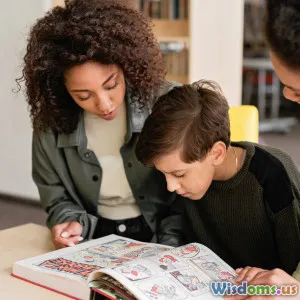
Personalized Learning: Strategies for Student Success
5 min read Explore effective personalized learning strategies to enhance student engagement and success in today's educational landscape. (0 Reviews)
Personalized Learning: Strategies for Student Success
In the evolving landscape of education, personalized learning stands out as a vital approach that tailors instruction to meet individual student needs. This method emphasizes understanding each learner's unique strengths, challenges, and interests, promoting deeper engagement and academic success.
Understanding Personalized Learning
Personalized learning is not merely a trend; it’s a transformative educational philosophy that adapts the learning experience to fit each student. This approach can take various forms, including customized learning paths, flexible pacing, targeted interventions, and leveraging technology to create engaging learning environments.
Key Components of Personalized Learning
- Individual Learning Plans (ILPs): These plans are designed to cater to the strengths and weaknesses of each student. Teachers collaborate with students to set achievable goals, monitor progress, and adjust strategies as needed.
- Flexible Learning Environments: Personalized learning often involves a mix of online and offline activities, allowing students to learn at their own pace and style. Classrooms can be rearranged to encourage collaboration or independent work, depending on the task at hand.
- Ongoing Assessment and Feedback: Regular assessments help educators understand student progress and areas needing improvement. Feedback should be constructive and timely, allowing students to reflect and adjust their learning strategies accordingly.
- Utilizing Technology: Digital tools and resources can greatly enhance personalized learning. From adaptive learning platforms to educational apps, technology plays a crucial role in providing tailored content and resources that meet diverse learning needs.
Strategies for Implementing Personalized Learning
To effectively implement personalized learning, educators can adopt several strategies:
1. Start with Student Interests
Understanding what motivates students can significantly enhance engagement. Educators can conduct surveys or facilitate discussions to learn about students' interests and incorporate them into lesson plans. For instance, if a student is passionate about sports, using sports-related examples in math problems can make learning more relatable and enjoyable.
2. Foster a Growth Mindset
Encouraging a growth mindset helps students embrace challenges and view failures as opportunities for growth. Educators can model this mindset by sharing their own learning experiences and emphasizing the importance of perseverance.
3. Create Collaborative Learning Opportunities
Learning does not have to be a solitary endeavor. Group projects and peer reviews can foster collaboration and help students learn from one another. This not only enhances social skills but also allows students to see multiple perspectives on a topic.
4. Use Data to Drive Decisions
Collecting and analyzing data on student performance can help educators make informed decisions about instructional methods and interventions. Tools like learning management systems can track progress and provide insights into each student’s learning journey.
5. Encourage Self-Directed Learning
Empowering students to take charge of their own learning fosters independence and responsibility. Providing resources for self-study, encouraging goal setting, and allowing choices in assignments can enhance self-directed learning.
Challenges and Considerations
While personalized learning offers numerous benefits, it is not without challenges. Educators may face obstacles such as limited resources, varied student readiness levels, and the need for professional development in implementing new strategies. However, with ongoing support and collaboration among educators, these challenges can be addressed effectively.
Conclusion
Personalized learning is a powerful approach that focuses on the individual needs of students, fostering engagement and success. By implementing strategies such as understanding student interests, fostering a growth mindset, and utilizing technology, educators can create a more inclusive and effective learning environment. As we move forward in the educational landscape, embracing personalized learning may be the key to unlocking each student’s potential and preparing them for future success.
Rate the Post
User Reviews
Popular Posts





















